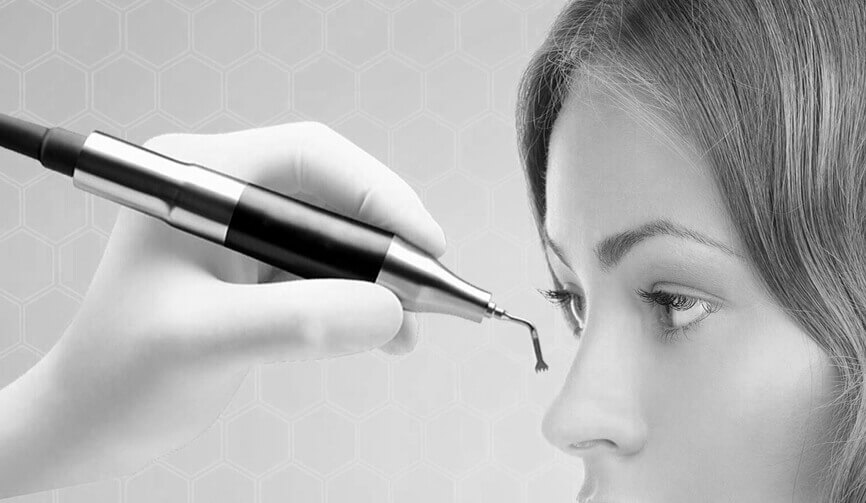Technological advances for minimally invasive surgery have recently highlighted the use of two different techniques. The first one is Micromotor Rhinoplasty and the second one is Piezzo (Ultrasonic) Rhinoplasty. In both techniques, the goal is to achieve higher successes than rhinoplasties with micro interventions. This technique, which is produced as an alternative to surgical tools such as chisels and rasps used in traditional techniques, allows the operation to be performed by vibration method.
Piezo (Ultrasonic) Rhinoplasty
The use of ultrasonic waves before rhinoplasty was first started in oral and dental surgery. The nasal bone is corrected without breaking with the vibration created by sound waves. With this technique, soft tissues are not damaged during surgery. Thus, the risk of bleeding and bruising is reduced. In this way, the patient’s recovery time is much more effortless and faster.
Piezzo (ultrasonic) rhinoplasty minimizes the risk of damaging soft tissues, nerves, vessels and mucosa in the natural structure of the nose during the operation. Linear and minimal cutting can be done with this device, while mucosal damage is taken under control. The main feature of the device is that it allows the surgeon to perform more precise and faster operations. During the operations, it increases the surgical control with its touch screen, multi-functional foot pedal and ease of adjustment. The ultrasonic power generator, the electronic module, the handpiece, with the tips of the handpiece, provides flexibility to the surgeon in applications, while offering the patient a fast, side-free and comfortable recovery time.
Micromotor Rhinoplasty 
Micromotor rhinoplasty is one of the rhinoplasty techniques where the nasal bone is not broken. This technique allows precise correction of the nasal bone by means of 2 millimeter fine tips attached to the micromotor device.
Problems such as bumps, width, and size in the nasal bone were interfered with traditional techniques using chisels and hammers. These methods did not allow the surgeon to work as precisely as required. The fine tips used in the micromotor technique intervene precisely without applying any force to the nasal bone. Millimeter corrections can be made on the nasal bone.
Soft tissue damage does not occur as it can be worked with millimeter precision tools. Thus, the risk of bleeding and edema is low. As a result, the healing process is also more comfortable and faster.
Micromotor rhinoplasty and Piezzo (ultrasonic) rhinoplasty give the opportunity to interfere with deformities in the nasal bone without any breaking process. In addition to this, it enables the operations to be performed more successfully by providing sensitive working opportunity to make millimeter corrections. While it speeds up the operation time for surgeons, it offers a quick recovery process for patients without bruising and edema.
